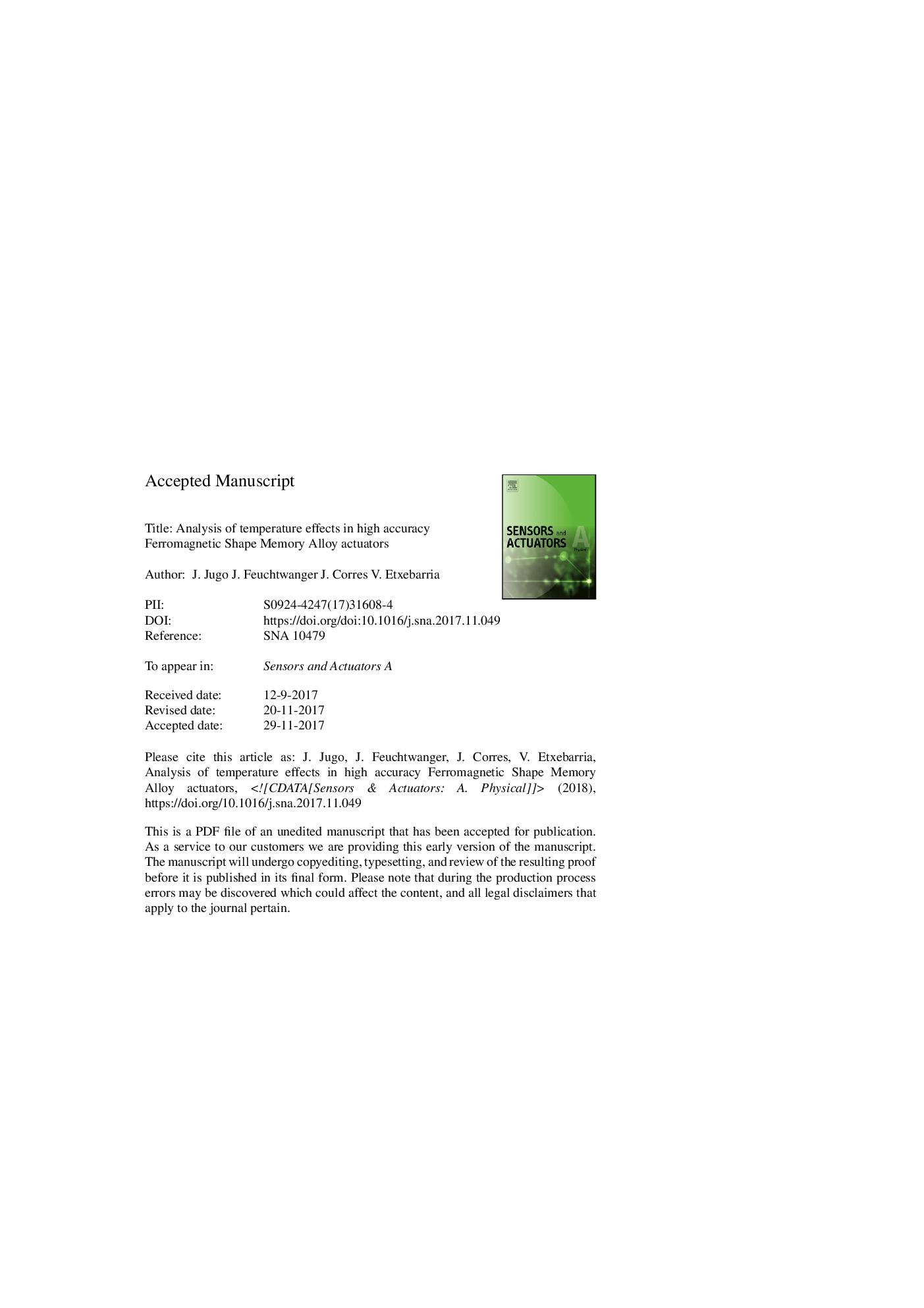| Article ID | Journal | Published Year | Pages | File Type |
|---|---|---|---|---|
| 7133790 | Sensors and Actuators A: Physical | 2018 | 27 Pages |
Abstract
The effect of temperature on high accuracy measurements is well known, and temperature controlled environments are a must for metrology of high accuracy mechanical parts. It is therefore not surprising that temperature would play an important role in controlling actuators capable of achieving nanometer resolutions. In most cases the thermal expansion of the components is the main issue with changes with temperature, but in the case of ferromagnetic shape memory alloys (FSMA) based actuators, there are additional complications. First, the material is highly hysteric and when actuated it rapidly self-heats the material. Secondly, the phase transition of the NiMnGa alloy used in the actuator is centered at about 330â¯K, and at this temperature the performance of the material starts to degrade because it starts to transform into the magnetically inactive cubic phase. In this work we analyze an actuator that uses orthogonal magnetic fields to deform the crystal under no external load. The actuator's control system operates in a “set-and-forget” mode, following an event-based control scheme and is able to achieve a position with a given precision and transient behavior, needing a reduced number of control actions and, then, a reduced energy consumption. In addition, the paper discusses the control implications of the temperature dependency of the actuator's behavior, based on experimental results.
Keywords
Related Topics
Physical Sciences and Engineering
Chemistry
Electrochemistry
Authors
J. Jugo, J. Feuchtwanger, J. Corres, V. Etxebarria,
